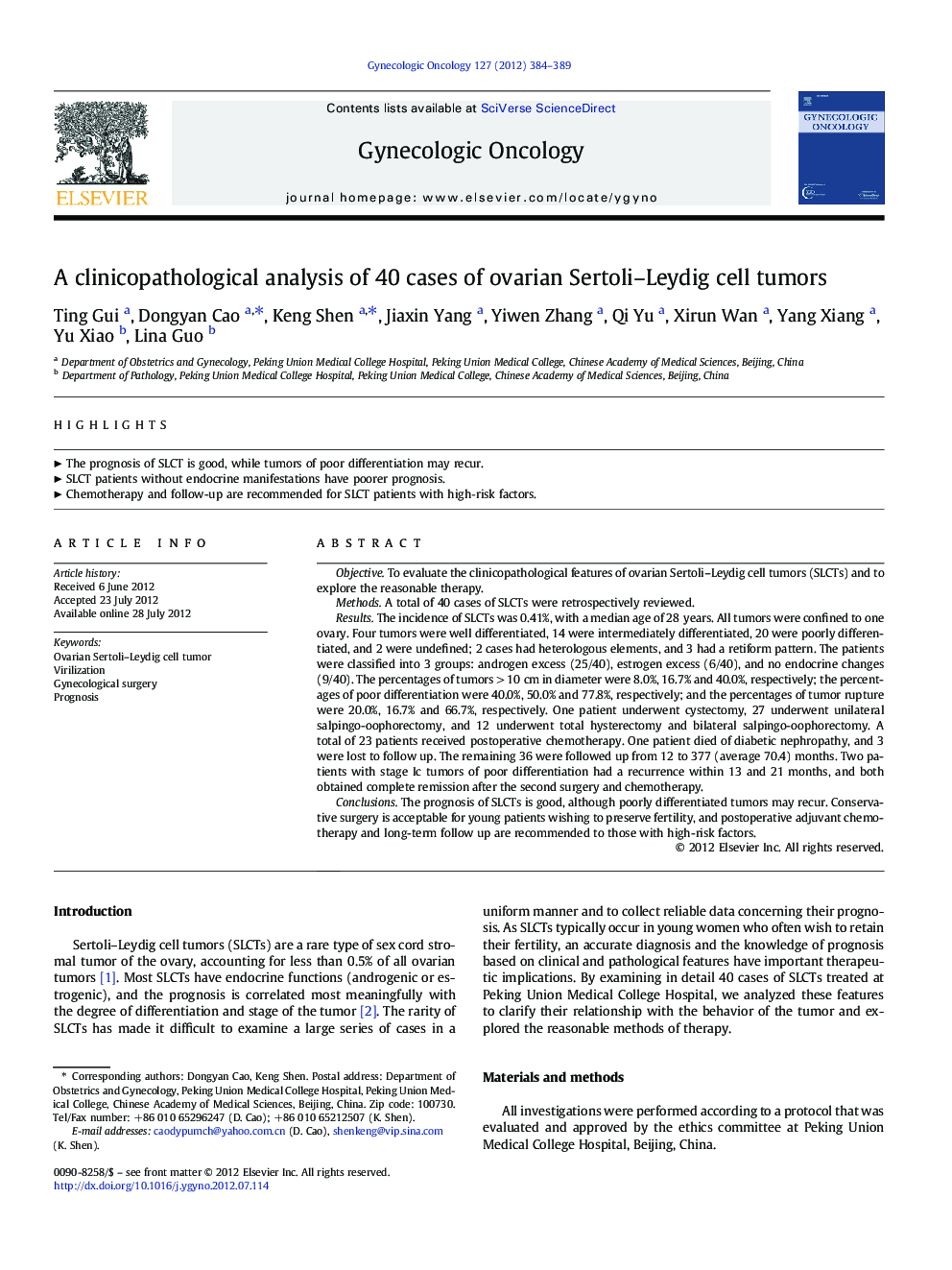| کد مقاله | کد نشریه | سال انتشار | مقاله انگلیسی | نسخه تمام متن |
|---|---|---|---|---|
| 3944934 | 1254242 | 2012 | 6 صفحه PDF | دانلود رایگان |

ObjectiveTo evaluate the clinicopathological features of ovarian Sertoli–Leydig cell tumors (SLCTs) and to explore the reasonable therapy.MethodsA total of 40 cases of SLCTs were retrospectively reviewed.ResultsThe incidence of SLCTs was 0.41%, with a median age of 28 years. All tumors were confined to one ovary. Four tumors were well differentiated, 14 were intermediately differentiated, 20 were poorly differentiated, and 2 were undefined; 2 cases had heterologous elements, and 3 had a retiform pattern. The patients were classified into 3 groups: androgen excess (25/40), estrogen excess (6/40), and no endocrine changes (9/40). The percentages of tumors > 10 cm in diameter were 8.0%, 16.7% and 40.0%, respectively; the percentages of poor differentiation were 40.0%, 50.0% and 77.8%, respectively; and the percentages of tumor rupture were 20.0%, 16.7% and 66.7%, respectively. One patient underwent cystectomy, 27 underwent unilateral salpingo-oophorectomy, and 12 underwent total hysterectomy and bilateral salpingo-oophorectomy. A total of 23 patients received postoperative chemotherapy. One patient died of diabetic nephropathy, and 3 were lost to follow up. The remaining 36 were followed up from 12 to 377 (average 70.4) months. Two patients with stage Ic tumors of poor differentiation had a recurrence within 13 and 21 months, and both obtained complete remission after the second surgery and chemotherapy.ConclusionsThe prognosis of SLCTs is good, although poorly differentiated tumors may recur. Conservative surgery is acceptable for young patients wishing to preserve fertility, and postoperative adjuvant chemotherapy and long-term follow up are recommended to those with high-risk factors.
► The prognosis of SLCT is good, while tumors of poor differentiation may recur.
► SLCT patients without endocrine manifestations have poorer prognosis.
► Chemotherapy and follow-up are recommended for SLCT patients with high‐risk factors.
Journal: Gynecologic Oncology - Volume 127, Issue 2, November 2012, Pages 384–389